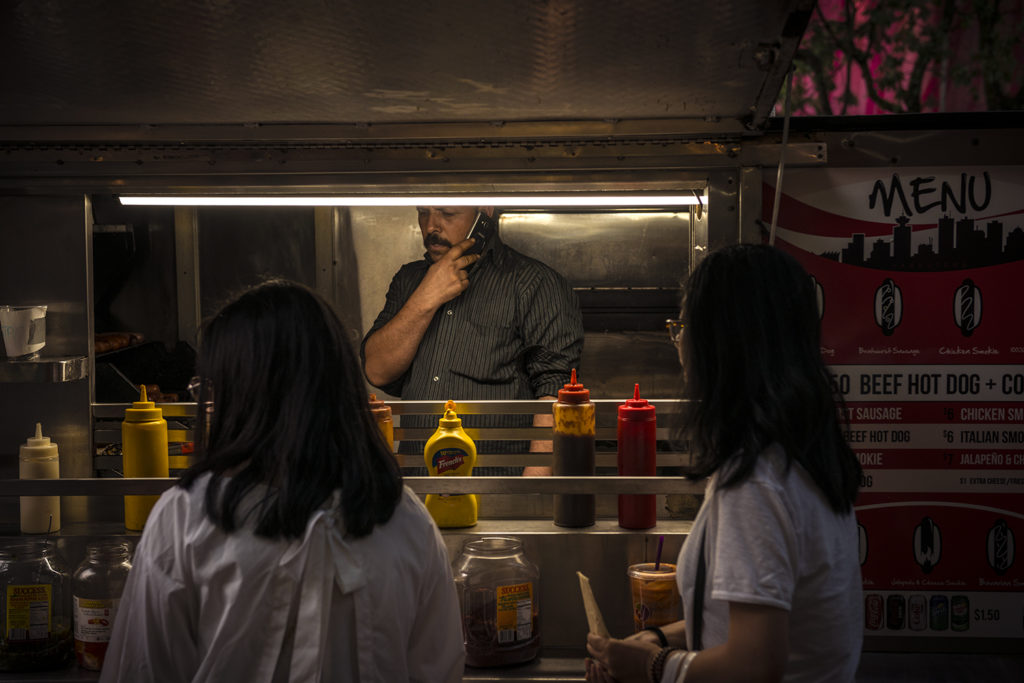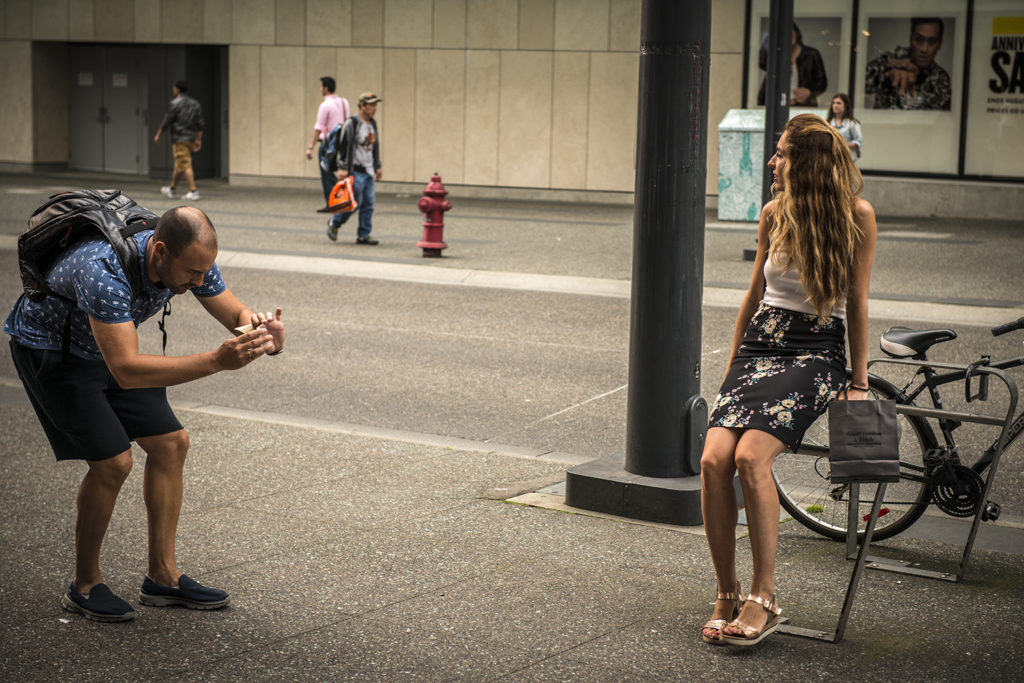Photography and in particular, Street Photography, is about finding order in chaos. There are so many variables, light, colour, timing, negative space and of course composition. I recently watched a video and the photographer spoke about making sense of the chaos. That is largely what we do as photographers. We make sense of a scene, that may not make sense. We look for things that most others would not look for or even notice. Then, we have the more difficult task of putting all of that into a frame, a box, inside our camera. One of the interesting comments made by Jay Maisel was this – “You are 100% responsible for everything in the frame”. That comment made me think about how I photograph. I tried really hard to get everything I needed into the frame. Sometimes, its also about NOT putting something into the frame, this can be even more important than what is in the frame. You see, as photographers, we control a few buttons on our camera. We try really hard to squeeze all the information we are seeing with our eyes, into a rectangular shape in the viewfinder. We have very little control over most of the things that we need like light, colour, texture and shapes. We do, however, have more control over what we put into the box. So, how do we decide what goes into the box?

We have very little control over most of the things that we need like light, colour, texture and shapes. We do, however, have more control over what we put into the box. So, how do we decide what goes into the box. My guiding principle is this, is that object adding or taking away from what I want my viewer to see? Does including that make the image stronger? If the answer is no to these questions, then I recompose until I have a yes. The saying “less is more” becomes relevant here. Don’t simply fill the box with unnecessary clutter that creates confusion, try and create cohesion. Try and create an impactful scene in the box. Another technique that Jay Maisel uses is finding a stage. He will see a scene, it could be a wall or a doorway or some other setup. He then looks at the composition and the light and if it works, he will wait. What is he waiting for, in his words, he “finds a stage and waits for the actors to come”. The important thing here is this…patience. Sometimes you might have to wait for 20 minutes before something happens. The second thing is imagination, what are you waiting for and will you know it when it happens? Its a great exercise though. Find a scene you like, it might be a beautoful wall or hedge or a street corner that appeals to you. Stand there and watch and wait for something to happen, you might be amazed at the images you can get.
The important thing is to minimise the chaos and create something amazing, something unique and beautiful. So spend some time working on minimising the chaos and working within the box!

